11 results
Black History Month cultural activities for Easel Assessments
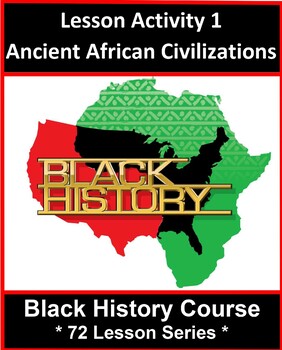
Activity 1: Ancient African Civilizations_Middle & High School Black History
This passage is about the ancient Ghana, Songhai, and Mali empires. Long before the colonial period, there were great African kingdoms whose rulers presided over magnificent courts. Their merchants traded in gold, salt, and other goods with faraway countries, often traveling vast distances over caravan routes across the plains and deserts. African American Black History Course_Lesson Activity 1: Ancient African Civilizations· Lesson 1 in the 72-part course series
Grades:
6th - 12th
CCSS:

Let's Write a Blues Song - Black History Month Music Genre
Are you looking for a way to observe Black History Month or enhance Music Genre Studies? This student-centered Blues resource is great to project and teach from your interactive board or assign through Easel Activities with Audio clips. Original blues lyrics are included to assist you in teaching the formula for writing blues lyrics, rhythm patterns and instrumental parts for traditional 12-bar blues songs. In this resource you will find charts for emerging musicians of any age.VoicePianoBarred
Subjects:
Grades:
Not Grade Specific

Activity 3: Enslavement & Slave Codes_Middle & High School Black History Course
Slaves were exported from Africa to many places in North and South America until 1865. By 1830 slavery was primarily located in the South, where it existed in many different forms. African Americans were enslaved on small farms, large plantations, in cities and towns, inside homes, out in the fields, and in industry and transportation.African American Black History Course_Lesson Activity 3: Enslavement and Slave Codes· Lesson 3 in the 72-part course series
Grades:
6th - 12th
CCSS:
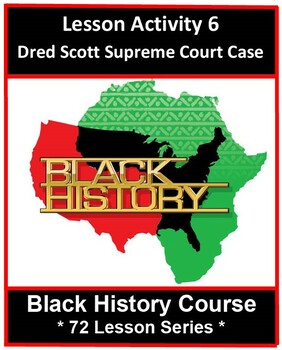
Activity 6: Dred Scott Supreme Court Case_Middle & High School Black History
The Dred Scott case, also known as Dred Scott v. Sandford, was a decade-long fight for freedom by a Black enslaved man named Dred Scott. The case persisted through several courts and ultimately reached the U.S. Supreme Court, whose decision incensed abolitionists, gave momentum to the anti-slavery movement and served as a stepping stone to the Civil War. Lesson Activity 6: Dred Scott Supreme Court CaseLesson 6 in the 72-part course series
Grades:
6th - 12th
CCSS:
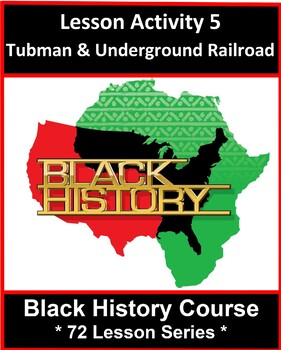
Activity 5: Tubman & Underground Railroad_Middle & High School Black History
Known as the “Moses of her people,” Harriet Tubman was enslaved, escaped, and helped others gain their freedom as a “conductor" of the Underground Railroad. Contrary to legend, Tubman did not create the Underground Railroad; it was established in the late eighteenth century by black and white abolitionists. Lesson Activity 5: Harriet Tubman & Underground RailroadLesson 5 in the 72-part course series
Grades:
6th - 12th
CCSS:
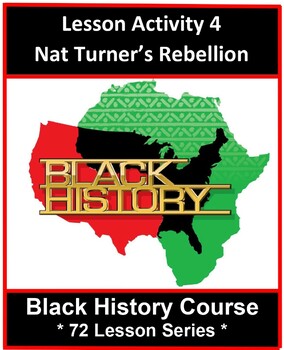
Activity 4: Nat Turner’s Rebellion_Middle & High School Black History Course
Nat Turner's Slave Rebellion occurred in 1831. Turner's force eventually consisted of more than 40 slaves, most on horseback. The force was discovered and captured on October 30th. While in jail awaiting trial, Turner spoke freely with whites about the revolt. The Confessions of Nat Turner was published within weeks of the Turner’s execution on November 11, 1831, and remains one of the most important sources for historians working on slavery in the United States. African American Black History
Grades:
6th - 12th
CCSS:

Activity 10: 54th Massachusetts Regiment_Middle & High School Black History
The 54th Regiment Massachusetts Infantry was a volunteer Union regiment organized in the American Civil War. Its members became known for their bravery and fierce fighting against Confederate forces. The 54th Massachusetts Regiment of the Civil War led by Robert ShawLesson 10 in the 72-part course series
Grades:
9th - 12th
CCSS:
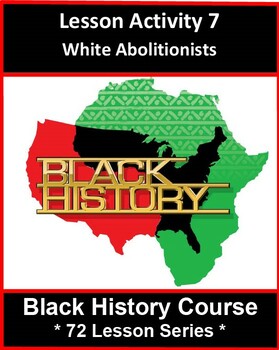
Activity 7: White Abolitionists_Middle & High School Black History
William Lloyd Garrison, John Brown, and Harriet Beecher Stowe were white abolitionists. Black and white abolitionists in the first half of the nineteenth century waged a biracial assault against slavery. Lesson Activity 7: White AbolitionistsLesson 7 in the 72-part course series
Grades:
6th - 12th
CCSS:
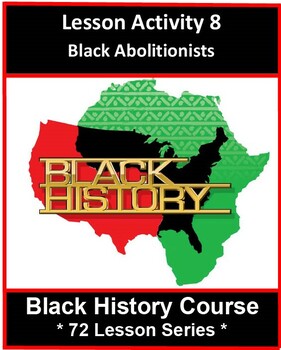
Activity 8: Black Abolitionists_Middle & High School Black History
David Walker, Frederick Douglass, and Sojourner Truth were Black abolitionists. Black and white abolitionists in the first half of the nineteenth century waged a biracial assault against slavery. Their efforts proved to be extremely effective. Lesson Activity 8: Black AbolitionistsLesson 8 in the 72-part course series
Grades:
6th - 12th
CCSS:
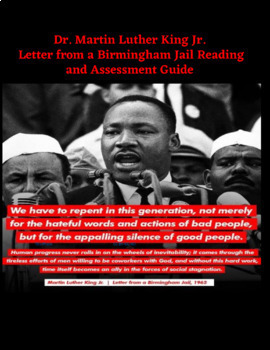
Dr. Martin Luther King Jr. Letter from a Birmingham Jail Lesson Resources
This Google Drive folder contains guidance with everything you need to know to effectively guide students through reading Dr. Martin Luther King Jr.'s "Letter from a Birmingham Jail" and assess their understanding of the text. Essential Questions:Is it ever justified to break the law? In which circumstances is civil disobedience justified?How does Dr. Martin Luther King Jr.’s Letter from a Birmingham Jail relate to social issues that persist in the U.S.? What has changed since the civil rights m
Grades:
9th - 12th, Higher Education
CCSS:

Activity 2: Transatlantic Slave Trade_Middle & High School Black History Course
The Transatlantic Slave Trade represented the largest forced migration of people in human history with the transfer of 12-20 million Africans to the Americas between the 16th to 19th centuries. For 366 years, European slavers loaded millions of Africans onto Atlantic slave ships. About 11 million survived the Middle Passage to landfall and life in the Americas.African American Black History Course_Lesson Activity 2: The Transatlantic Slave TradeLesson 2 in the 72-part course series
Grades:
6th - 12th
CCSS:
Showing 1-11 of 11 results





